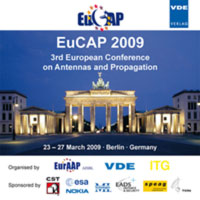Ionospheric Perturbation Characteristics and their Potential Impact on GNSS Applications
Conference: EuCAP 2009 - 3rd European Conference on Antennas and Propagation
03/23/2009 - 03/27/2009 at Berlin, Germany
Proceedings: EuCAP 2009
Pages: 5Language: englishTyp: PDF
Personal VDE Members are entitled to a 10% discount on this title
Authors:
Jakowski, Norbert; Mayer, Christoph; Borries, Claudia; Wilken, Volker; Dubey, Smita (Institute of Communications and Navigation, German Aerospace Center, Kalkhorstweg 53, 17235 Neustrelitz, Germany)
Abstract:
Due to the dispersive nature of the ionosphere, dual frequency GNSS measurements may effectively be used to derive robust and accurate information of the ionospheric state under quiet and perturbed space weather conditions. Well established ground based and innovative space based GNSS measurements offer a unique chance for a permanent monitoring of the electron density structure of the global ionosphere-plasmasphere system under perturbed conditions. The analyzed storms propagate primarily from high towards low latitudes at the European sector. Analysis of GPS measurements reveals different perturbation types such as large scale ionization fronts, wavelike Traveling Ionospheric Disturbances (TIDs) and small scale irregularities producing radio scintillations. Since strong horizontal ionization gradients play an important role in safety of life applications, gradient characteristics is considered using the available large data set. Strongest gradients are observed in North - South direction. To quantify the ionospheric perturbation degree in GNSS applications, preliminary ideas how to define an ionospheric perturbation index are discussed. Reported are scintillation measurements carried out at high rate GPS receivers located at high and low latitudes in Kiruna / Sweden and Bandung / Indonesia. The occurrence rate of scintillations shows typical dependencies from local time, season and solar cycle. It has been found that large amplitude fluctuations μ cause loss of lock.


